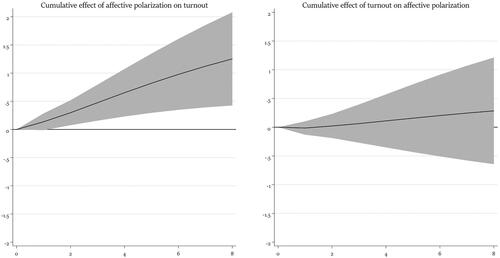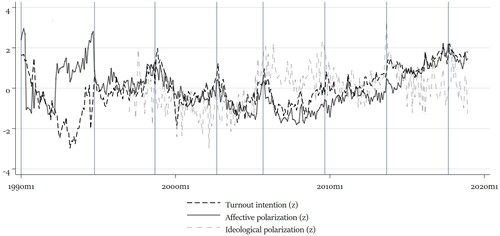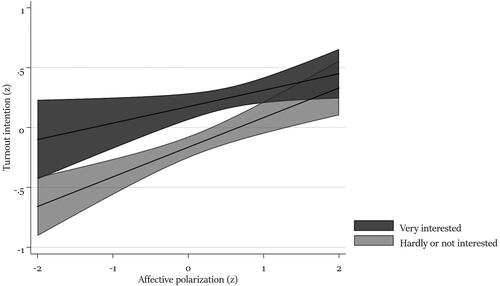Figures & data
Table 1. Key features of studies 1 to 3.
Table 2. ARIMA model predicting turnout.
Figure 2. Cumulative impulse response functions.
Note: Cumulative impact of unit change of X on Y, with 95% confidence intervals. Based on VAR-model presented in in the Online appendices.
Source: Politbarometer.

Table 3. Predicting actual turnout at bundesland elections (key coefficients).
Table 4. Lagged DV panel regression predicting (1) turnout and (2) affective polarisation.
Table 5. Lagged DV panel regression predicting (1) turnout and (2) affective polarisation.




